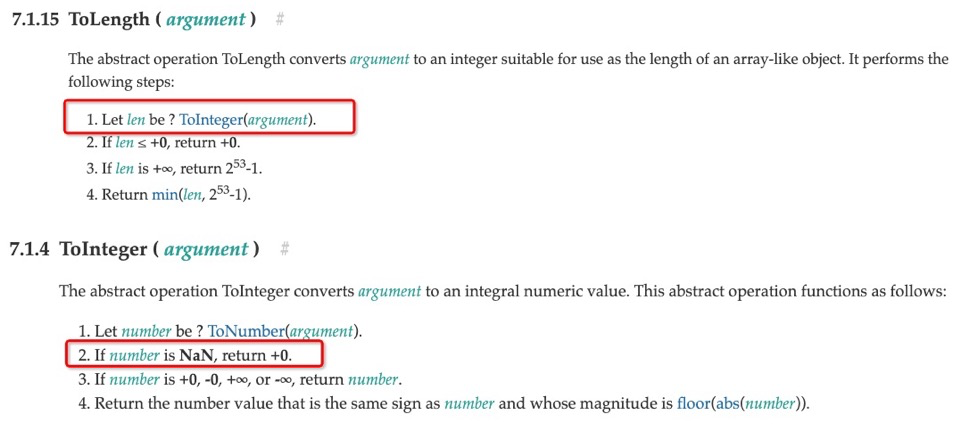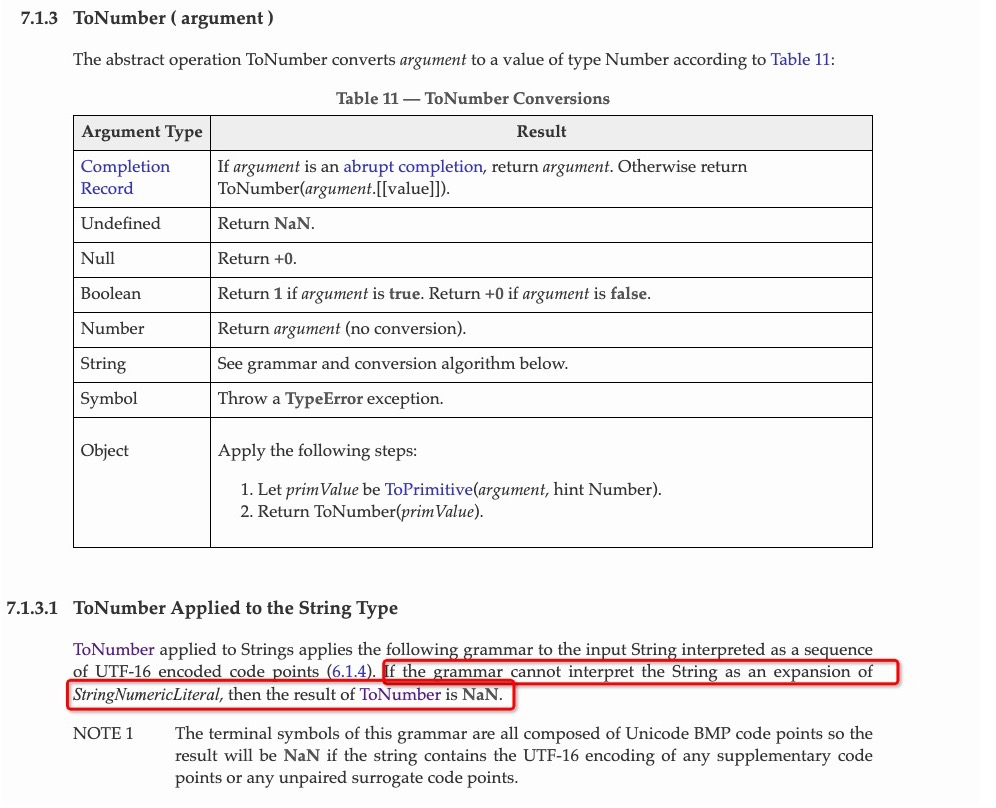一道类数组的面试题
问题
var obj = {
2: '3',
8: '9',
length: 2,
splice: Array.prototype.splice,
push: Array.prototype.push
}
obj.push(1);
console.log(obj);
obj.push(2);
console.log(obj);
输出的结果是
Object {
2: 1
3: 2
8: "9"
length: 4
push: ƒ push()
splice: ƒ splice()
}
笔者扩展了一下
var obj = {
2: '3',
8: '9',
length: 'abc',
splice: Array.prototype.splice,
push: Array.prototype.push
}
obj.push(5);
/*
Object { 0: 5
2: "3"
8: "9",
splice: ƒ,
push: ƒ }
*/
var obj = {
6: '3',
8: '9',
length: 2,
splice: Array.prototype.splice,
push: Array.prototype.push
}
obj.push(5);
/*
Object { 2: 5
6: "3"
8: "9"
length: 3
push: ƒ
splice: ƒ }
*/
解释
push 这个方法应该是去识别类数组中的 length 属性的
- 如果 length 属性存在并且为数字,那就设置 obj[length] 的值,并且 length + 1
- length 不存在或者不为数字,那么从 obj[0] 开始设置,并且 length 被设置为 1.
ES 设计标准里说到

解释一下 ToLength 里调用了 ToInteger,ToInteger 里调用 ToNumber,ToNumber 的规则很多,但简言之无法被转化数字中的字符串返回 NaN 非数。ToUint32 里得到结果是非数,那就返回成 +0


If the grammar cannot interpret the String as an expansion of StringNumericLiteral, then the result of ToNumber is NaN.
翻译:如果此文法无法将字符串解释为「字符串数值常量」的扩展,那么 ToNumber 的结果为 NaN。




 浙公网安备 33010602011771号
浙公网安备 33010602011771号